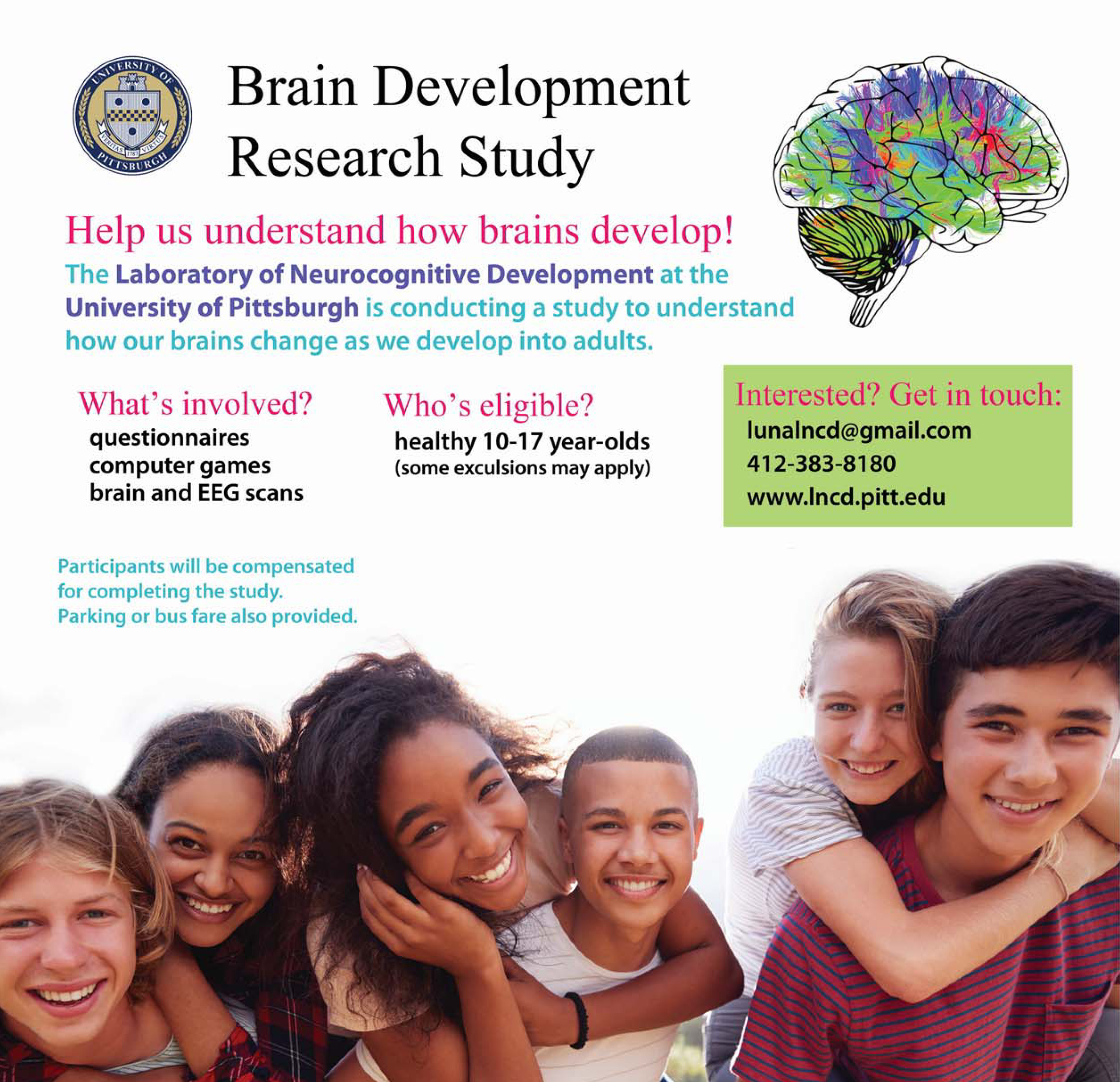Participate!
Our lab is conducting a study to understand how our brains change as we develop into adults. We are seeking healthy teens and adults 10-26 years old.
Learn MoreMap DirectionsThe researchers
We are a team of investigators, researchers, students, and staff dedicated to exploring the adolescent brain.
BiographiesJob OpeningsHelp us understand how brains develop!
At the LNCD, we use multimodal neuroimaging, such as fMRI, DTI, MEG, and PET, to characterize neurocognitive development during adolescence. Our research focuses on the brain circuitry that allows for higher-order cognition, including networks for voluntary response suppression and spatial working memory.


